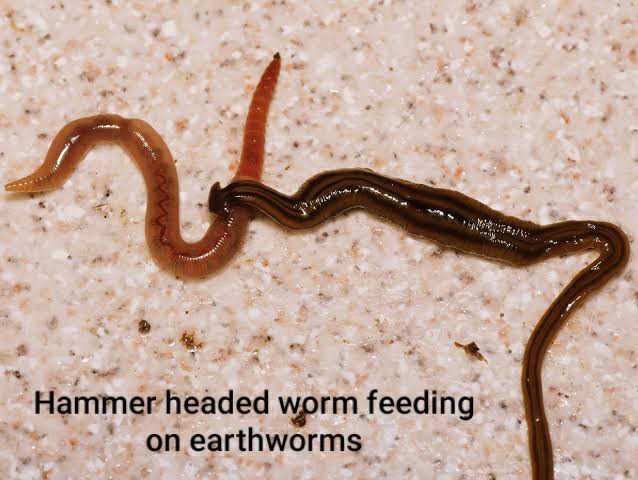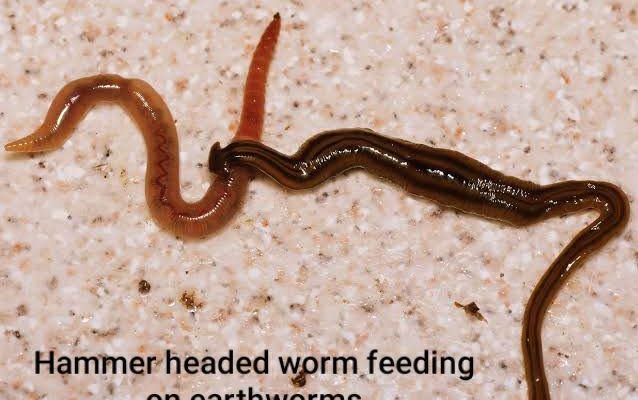
Simply put, hammerhead worms are exotic predators that can significantly reduce the number of earthworms in a given area. They don’t just nibble on them; they are hunters, actively seeking them out. If you’ve ever noticed fewer earthworms in your garden or yard, these hammerheads might be the reason. So, let’s explore how these unusual predators are changing our soil health and what it means for the ecosystems we care about.
What Are Hammerhead Worms?
Hammerhead worms belong to the *Bipalium* genus, and they’re known for their distinctive hammer-shaped heads. If you were to spot one, you might think it looks like a character straight out of a cartoon. These worms can grow up to 12 inches long and are typically found in damp areas, making gardens and forests their favorite hangouts.
These creatures are native to Southeast Asia, but they’ve made their way to other parts of the world, including North America. They thrive in warm, humid environments. But here’s the kicker: they’re not just ordinary worms. Hammerhead worms are carnivorous, preying primarily on earthworms, which puts them in direct competition with the hardworking earthworm populations we rely on for healthy soil.
How Do Hammerhead Worms Hunt?
So, how do these hammerhead worms actually hunt? Well, they have a unique method that’s both fascinating and a bit gruesome. Hammerhead worms secrete a slimy substance that helps them paralyze their prey, usually unsuspecting earthworms. You might picture them sneaking up, like a ninja, ready to strike.
Once they’ve got a hold of an earthworm, they use a combination of muscle contractions and enzymes to dissolve their prey. It’s a bit like how some animals enjoy a nice tender steak. Unfortunately, this means that for every hammerhead worm introduced into an ecosystem, earthworms face a serious threat.
Impact on Earthworm Populations
The presence of hammerhead worms can lead to a notable decline in earthworm populations. This is especially concerning because earthworms play such a vital role in soil health. They help aerate the soil, improve its structure, and break down organic matter—essentially composting right in the ground.
When hammerhead worms invade an area, they disrupt this balance. You might wonder what happens to the soil when earthworm numbers dwindle. Without enough earthworms, soil can become compacted, less fertile, and even unable to support plant life effectively. It’s a bit like a domino effect, where the loss of one species causes significant changes to the entire ecosystem.
Regional Variations: Where Are Hammerhead Worms Found?
Hammerhead worms are primarily found in warmer climates, which means they’re more prevalent in areas like the southern United States, parts of Asia, and some areas in Europe. You might be wondering if you need to be concerned about them in your region. Well, if you live in a warmer area, it’s good to stay informed.
These worms thrive in gardens, parks, and other moist environments. They can hitch a ride on plants or soil when people move them around, effectively spreading their range. As they continue to adapt and expand, the impact on earthworm populations could grow, making this a bigger issue in the future.
Recognizing Hammerhead Worms in Your Garden
If you suspect that hammerhead worms have invaded your garden, there are a few things to look for. First, identify their distinctive shape. If you see long, flat worms with a hammer-like head, that’s a telltale sign. They often come in various colors, including brown, gray, and even vibrant hues.
Another giveaway is their movement. These worms glide smoothly across the ground, which is quite different from the wriggly motion of earthworms. If you notice fewer earthworms and an increase in these flat worms, it might be time to take action to protect your soil.
Can You Control Hammerhead Worm Populations?
You might be wondering if there’s anything you can do to manage hammerhead worm populations in your garden. The answer is yes, but it requires a combination of methods.
- Hand-Picking: If you see these worms, you can hand-pick them and dispose of them in a sealed bag. This can help reduce their numbers without harming your earthworms.
- Soil Health: Maintaining healthy soil with plenty of organic matter can help support earthworm populations. The more earthworms you have, the better they can compete against hammerhead worms.
- Bio-control: Research is ongoing into natural predators or parasites that could help control hammerhead worm populations. While it’s not a quick fix, it’s an area of interest in ecological management.
Taking these steps can help keep your garden thriving while limiting the impact of these invasive predators.
The Bigger Picture: Ecosystem Balance
So, why does this matter? Every species plays a role in its ecosystem. When hammerhead worms affect earthworm populations, it can lead to broader environmental effects. Healthy soil is the foundation for robust plant life, which supports various animals and insects.
This chain reaction is crucial for biodiversity; every little change can ripple out, affecting everything from the tiniest microbes to larger mammals. By understanding the interaction between hammerhead worms and earthworms, we can take steps to protect our ecosystems.
In conclusion, hammerhead worms pose a unique challenge to earthworm populations and, by extension, soil health. Recognizing their presence and understanding their impact is vital for anyone who loves gardening or values a healthy ecosystem. By taking proactive measures, we can help maintain the balance in our outdoor spaces. So the next time you’re out in your garden, keep an eye out for both earthworms and their unexpected predators—there’s more to the soil than meets the eye!

